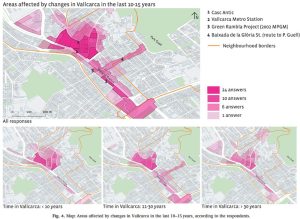Looking at Gentrification: Should Stories Count?
When first studying the scientific method, we learn about conducting an experiment to help support or eliminate a hypothesis. The experiment itself is said to provide supporting evidence that helps scientists, policymakers, entrepreneurs, and others make decisions. However, what qualifies as evidence can be arbitrary. When some look to science, they expect to see numbers and figures. But in other circumstances, according to Cornel West, stories and personal accounts can be just as valuable.
While researching how flooding from Hurricane Florence may have affected gentrification in New Hanover County, North Carolina, I have found that neither numerical evidence nor personal accounts alone can help explain the phenomenon. Both forms of evidence play different roles and offer a different perspective on the story. Studies have shown that in some circumstances, quantitative evidence may not be able to paint the full picture when studying a process (social, environmental, economic, etc.) that changes over time. In such a case, qualitative evidence or personal accounts and perspectives can provide the crucial details needed to find answers.

The same neighborhood in New Orleans before and after Hurricane Katrina. The image on the right shows college students moved into a renovated house in a previously Black community.
Gentrification offers a good example. It occurs when a lower-income community, or a plot of land in an undeveloped area, undergoes a transformation to attract the middle and upper class for commercial, residential, or recreational use. Gentrification can happen quickly or over long periods of time, depending on the circumstances. Typically, gentrification results in the displacement of individuals who previously resided in the community. In my area of study, such displacement occurs due to both the impact of a natural disaster and factors influencing the recovery process. Regardless, the displacement of people can result in more vulnerable communities undergoing a cultural shift and a decrease in socioeconomic diversity that infringe on its history and identity.
Various factors can signify gentrification, especially since it can be either a physical or a social process. For example, in a study by Eric Van Holm and Christopher Wyczalkowski, gentrification was measured, among other variables, by looking at median household income, housing prices, and the age of structures, while in a study by Kyle Aune and others, potential for gentrification was measured based on median household income, poverty levels, and the proportion of individuals with a college education. Both studies turned to numerical data provided by the U.S. Census to help understand gentrification in the wake of Hurricane Katrina after it hit New Orleans in 2005. However, what if there were a circumstance where gentrification was occurring in an area that was recently impacted by a natural disaster, but the process was in too early a stage for numerical data, such as from the Census or American Community Survey, to be used to identify its existence? This is where residents’ perspective is key.
In some circumstances, it might be easier to visualize a process like gentrification occurring rather than quantifying it. In their study looking at gentrification in Chicago, Jackelyn Hwang and Robert Sampson pointed out that some census tracts could be incorrectly correlated with gentrification if only census indicators were looked at. Instead, they highlighted the importance of visible cues for gentrification that could include the structural mix of an area (old vs. new buildings), visible beautification efforts, or the prescience of disorder or decay. Other researchers, such as Bianca Antunes and her colleagues, interviewed residents in the Vallcarca neighborhood of Barcelona, Spain, asking how changes taking place affected them. They then mapped gentrification based on the results of their interviews.
As you can see, multiple sources, quantitative and qualitative, are needed to gain a more complete understanding of gentrification and its driving factors. Although there is, unfortunately, limited research that uses such mixed methodology to study the correlation between gentrification and the impact of natural disasters, it served as an inspiration for my research. Both numerical data, the perspective of residents, and visualization are vital in putting together the pieces of an environmental justice puzzle that is growing in importance with every passing season.
 RCC Fellow Cate Arnold is a senior at the University of North Carolina Wilmington. She is an Honors College student pursuing a double major in Environmental Science and International Studies with minors in Political Science and Geographic Information Systems. At UNC-Wilmington, she serves as a grant reviewer for The Green Initiative Fund and is on the executive board of the campus chapter of Plastic Ocean Project, a local non-profit. In her free time, she also volunteers with the Ocean Friendly Establishments initiative.
RCC Fellow Cate Arnold is a senior at the University of North Carolina Wilmington. She is an Honors College student pursuing a double major in Environmental Science and International Studies with minors in Political Science and Geographic Information Systems. At UNC-Wilmington, she serves as a grant reviewer for The Green Initiative Fund and is on the executive board of the campus chapter of Plastic Ocean Project, a local non-profit. In her free time, she also volunteers with the Ocean Friendly Establishments initiative.
![]() The Rachel Carson Council depends on tax-deductible gifts from concerned individuals like you. Please help if you can.
The Rachel Carson Council depends on tax-deductible gifts from concerned individuals like you. Please help if you can.
![]() Sign up here to receive the RCC E-News and other RCC newsletters, information and alerts.
Sign up here to receive the RCC E-News and other RCC newsletters, information and alerts.
